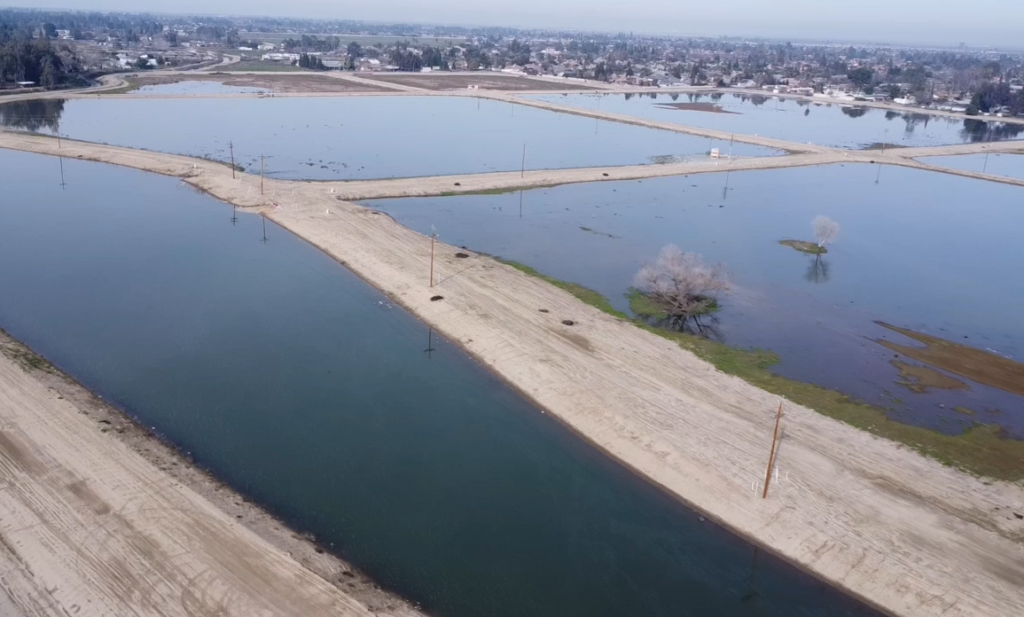With all the flooding, runoff and more snowmelt still to come, everyone’s wondering: How’s the groundwater?
Short answer: Better.
Long answer: It’s going to take more than one good water year to reach sustainability.
After decades of over pumping and two severe, multi-year droughts within five years of each other, San Joaquin Valley aquifers had withered significantly.
So significantly, that even this year’s abundance won’t end what one hydrologist is calling the valley’s “groundwater drought.”
The charge to recharge
So far, the state has tracked about 3.8 million acre feet of so-called “managed aquifer recharge” this year, wrote a spokesperson for the state Department of Water Resources (DWR) in an email. That’s following last year’s overdraft of 6.5 million acre feet, the spokesperson added.
But the managed recharge is only what is officially on the books.
“There is likely much more recharge occurring as part of natural recharge that isn’t accounted for here,” wrote Tim Godwin, supervising engineering geologist for DWR, in an email. “We will have a much better picture as the groundwater systems demonstrate the groundwater level response to recharge water throughout the season.”
Per the Sustainable Groundwater Management Act, groundwater levels in overdrafted basins are officially measured twice a year – first between Jan. 15 to March 30 and again between Sept. 15 and Nov. 15. Those fall measurements should show how well water tables rebounded.
In the meantime, most irrigation districts have been diverting and recharging as much water as they can.
The Rosedale-Rio Bravo Water Storage District in Kern County has recharged more than 123,000 acre feet so far this year, according to General Manager Dan Bartel. The nearby North Kern Water Storage District isn’t far behind with about 100,000 acre feet socked away, said General Manager Dave Hampton. Those are just two of more than a dozen water agencies in Kern County with dedicated recharge programs.
Further north, the Tulare Irrigation District has taken in 145,000 acre feet of water so far this year, the majority of which has been for recharge, said Aaron Fukuda, general manager of the district. The district recharges water through more than 300 miles of open earthen canals and 1,300 acres of recharge ponds.
Irrigation takes a cut
But going forward, most water will be for irrigation demand since the growing season has begun.
“Our diversion has gone up like crazy,” said Fukuda.
The district has 150 irrigators taking water now, he said.
Still, Fukuda said the amount of diversion and recharge should significantly help the aquifer.
In 2017, a comparable wet year, the district diverted 400,000 acre feet, about half of which went into the ground. That year, groundwater levels came up by about 19 feet, said Fukuda.
“I’m hopeful that we get to what we did in 2017, if not a little bit more,” said Fukuda.
In the Lower Tule River Irrigation District, there are more than 5,000 acres of recharge facilities that are full with water, said Eric Limas, general manager of Lower Tule. Landowners are also flooding some of their farm ground which should bolster the total amount of recharge, he said.
Limas estimates that the district will recharge 250,000 acre feet this year, similar to what it recharged in 2017. Average recharge for the district is about 85,000 acre feet a year.
“Sustainability can only be judged on a long term basis,” said Limas. “This year being a wet year coming off of those dry years as an example, you have to look at it on a long term basis. Sustainability can’t happen in one year.”
Climbing out of a deep hole
While the excess water will help some water tables rebound, it’s not nearly enough to make up for the last three years of drought.
Groundwater levels go up about as fast as they go down, said Thomas Harter, a professor at UC Davis who specializes in groundwater resources in agricultural areas. So you need as many average to wet years as there are drought years to balance out, he said.
Still, this year was crucial for the groundwater system.
“This is a very necessary year for us to not get into the hole even further than we already are,” said Harter. “And so it’s a relief from a very stressful situation. But not a respite that can make us go into a more relaxed position.”
Other scientists agreed.
“Because of all the snow and rain the surface water drought is over,” said Graham Fogg, professor emeritus of hydrogeology at UC Davis. “But not the groundwater drought.”
The groundwater drought won’t be over until pumping is reduced enough to reverse the downward trends of groundwater levels that have been persisting for decades, said Fogg.
The wet year will certainly improve groundwater conditions though, Fogg said. By how much is difficult to say right now. Often after wet years groundwater levels rebound, sometimes by a lot in certain areas, said Fogg.
“While the flooding is terrible for a lot of people whose lands have been inundated, for the groundwater it’s generally a very positive thing,” said Fogg. “But it doesn’t get us out of the groundwater drought. The groundwater drought is imposed by us, not so much by Mother Nature.”
Share this:
- Click to share on Facebook (Opens in new window)
- Click to share on Twitter (Opens in new window)
- Click to share on LinkedIn (Opens in new window)
- Click to share on Reddit (Opens in new window)
- Click to share on Tumblr (Opens in new window)
- Click to share on Pinterest (Opens in new window)
- Click to share on Pocket (Opens in new window)
- Click to share on Telegram (Opens in new window)
- Click to share on WhatsApp (Opens in new window)
- Click to print (Opens in new window)








